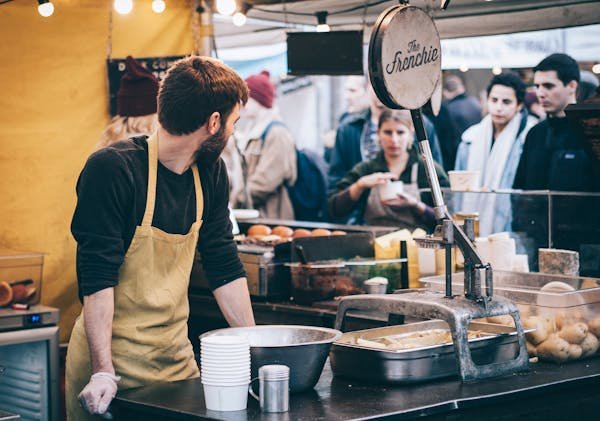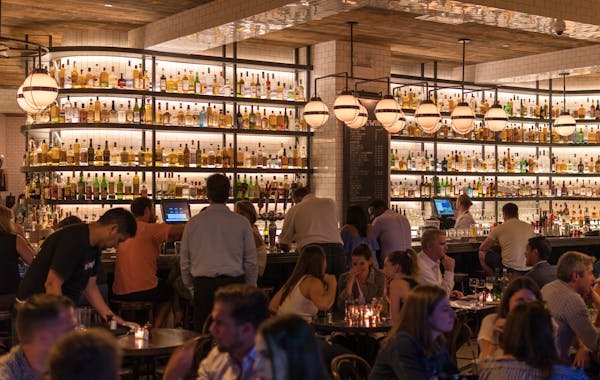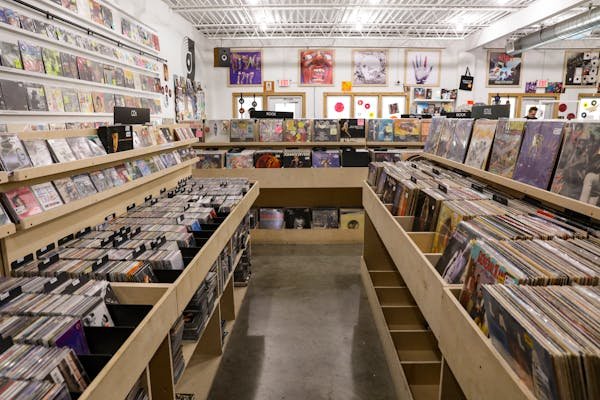Running a restaurant is a challenging yet rewarding endeavor. With intense competition and changing consumer preferences, innovative marketing is essential for standing out and attracting customers. This article explores creative and effective marketing strategies that can help your restaurant thrive. From leveraging social media to enhancing customer experiences, we’ll cover actionable ideas to revitalize your marketing approach and drive business growth.
Understanding Your Audience
Utilizing Advanced Analytics
To deeply understand your audience, leverage advanced analytics tools to gather detailed insights into customer behavior. Tools like Google Analytics, Facebook Insights, and specialized restaurant analytics software can provide valuable data on who your customers are, how they interact with your brand, and what drives their dining choices.
Analyze metrics such as the most popular dishes, peak dining times, and customer demographics. Use this data to refine your marketing strategies, optimize your menu, and enhance the overall customer experience.
Conducting Behavioral Segmentation
Behavioral segmentation involves dividing your audience into groups based on their behavior patterns, such as dining frequency, order preferences, and spending habits. Identify key segments like regular customers, occasional visitors, and first-time diners.
Tailor your marketing messages and promotions to each segment. For example, offer loyalty rewards to regular customers, special discounts to occasional visitors, and welcome offers to new customers. Behavioral segmentation helps you deliver more personalized and effective marketing campaigns.
Engaging in Ethnographic Research
Ethnographic research involves observing and interacting with your customers in their natural environment to understand their needs, preferences, and pain points better. Spend time in your restaurant, watching how customers interact with your space, menu, and staff.
Engage in conversations to learn about their dining experiences and preferences. This qualitative research provides deep insights that can help you create a more customer-centric dining experience. Use these insights to tweak your menu, improve service, and enhance the ambiance.
Leveraging Social Media Listening
Social media listening goes beyond monitoring mentions of your restaurant; it involves actively tracking conversations about dining trends, competitor activities, and customer preferences in your area. Use social media listening tools to identify popular food trends, preferred dining experiences, and potential gaps in the market.
Engage with your audience by responding to comments, participating in discussions, and sharing relevant content. Social media listening helps you stay ahead of trends and adapt your offerings to meet evolving customer expectations.
Analyzing Competitor Audiences
Understanding the audiences of your competitors can provide valuable insights into potential market opportunities and areas for differentiation. Follow your competitors on social media, read reviews, and visit their websites to learn about their customer base.
Analyze their marketing strategies, promotions, and customer interactions. Identify what they do well and areas where they fall short. Use this information to refine your own marketing approach, offering something unique that sets your restaurant apart.
Implementing Predictive Analytics
Predictive analytics uses historical data to forecast future customer behaviors and trends. Implement predictive analytics tools to anticipate customer demand, optimize inventory, and tailor marketing campaigns.
For example, predict which menu items will be popular during certain seasons or events and adjust your offerings accordingly. Use predictive analytics to identify at-risk customers who may not return and create targeted campaigns to re-engage them. This proactive approach ensures you stay ahead of customer needs and preferences.
Creating a Feedback Loop
Establishing a continuous feedback loop with your customers ensures you stay attuned to their needs and preferences. Encourage customers to provide feedback through comment cards, online surveys, and review platforms.
Regularly review this feedback to identify trends and areas for improvement. Implement changes based on customer suggestions and communicate these improvements through your marketing channels. Demonstrating that you listen to and act on customer feedback builds trust and loyalty.
Building Customer Personas with Real Stories
Enhance your customer personas by incorporating real stories and experiences shared by your customers. Collect testimonials, conduct interviews, and gather anecdotes that reflect different segments of your audience.
Use these stories to bring your personas to life, making them more relatable and actionable for your marketing team. Real stories provide deeper insights into customer motivations and preferences, helping you create more targeted and effective marketing strategies.
Hosting Focus Groups
Focus groups offer an opportunity to gather in-depth insights from a select group of customers. Host focus groups to discuss various aspects of your restaurant, such as menu items, ambiance, service quality, and marketing campaigns.
Encourage participants to share their honest opinions and suggestions. Use these discussions to uncover hidden insights and validate your marketing ideas. Focus groups provide valuable qualitative data that can guide your strategic decisions and help you better understand your audience.
Monitoring Customer Journey
Map out the entire customer journey, from the moment they discover your restaurant to their post-dining experience. Identify key touchpoints such as social media interactions, website visits, reservations, dining experience, and follow-up communication.
Analyze how customers move through these stages and where they might encounter pain points or opportunities for delight. Use this journey map to optimize each touchpoint, ensuring a seamless and enjoyable experience that encourages repeat visits and positive reviews.
Leveraging Social Media

Harnessing the Power of Instagram
Instagram is a highly visual platform that is perfect for showcasing your restaurant’s dishes, ambiance, and events. Create a visually cohesive feed by using consistent filters and colors that reflect your brand. Utilize Instagram Stories and Highlights to share behind-the-scenes content, daily specials, and customer testimonials.
Engage with your audience through polls, Q&A sessions, and interactive stickers. Use Instagram Reels to create short, engaging videos that highlight your chef’s skills, special dishes, or restaurant events. Collaborate with local influencers to reach a broader audience and drive more foot traffic to your restaurant.
Utilizing Facebook’s Advanced Features
Facebook offers a range of features that can help you connect with your audience and promote your restaurant. Create a dedicated Facebook page and ensure it is complete with your restaurant’s location, contact information, menu, and hours of operation. Use Facebook Events to promote upcoming events, special promotions, or new menu launches.
Leverage Facebook Groups to build a community around your restaurant, where members can share their experiences, recipes, and feedback. Utilize Facebook’s advertising platform to create targeted ads that reach specific demographics, interests, and behaviors. Run Facebook Live sessions to engage with your audience in real-time, answer their questions, and showcase live cooking demonstrations or restaurant tours.
Engaging with the Local Community on Twitter
Twitter is an excellent platform for engaging with your local community and staying updated with the latest trends and events. Follow local businesses, food bloggers, and community influencers to build a network of supporters. Participate in local conversations and hashtags to increase your visibility. Share timely updates, such as daily specials, event announcements, and seasonal menu changes.
Use Twitter polls to gather feedback from your audience and involve them in decision-making processes, such as choosing a new dish to add to the menu. Respond promptly to mentions, retweets, and direct messages to foster a sense of community and show that you value customer interaction.
Showcasing Your Culinary Skills on YouTube
YouTube is a powerful platform for sharing long-form video content that showcases your restaurant’s culinary expertise. Create a YouTube channel and upload videos that highlight your signature dishes, cooking techniques, and chef interviews. Consider producing a series of cooking tutorials or “behind-the-scenes” videos that give viewers an inside look at your kitchen operations.
Optimize your video titles, descriptions, and tags with relevant keywords to improve search visibility. Promote your YouTube content through your other social media channels, website, and email newsletters to drive traffic and build a loyal following.
Building a Presence on TikTok
TikTok is a rapidly growing platform that offers unique opportunities for creative and engaging content. Create short, fun videos that highlight your restaurant’s personality, such as dance challenges, recipe tips, or humorous skits featuring your staff. Use trending sounds and hashtags to increase the chances of your content being discovered by a wider audience.
Collaborate with TikTok influencers who align with your brand to reach new potential customers. Host TikTok challenges or contests to encourage user-generated content and increase engagement. Monitor the performance of your TikTok videos to understand what resonates with your audience and adjust your strategy accordingly.
Creating Location-Based Content
Leverage location-based content to attract local customers and tourists. Use geotags and location-based hashtags on Instagram and Facebook to increase the visibility of your posts to people in your area. Create and claim your Google My Business profile to ensure your restaurant appears in local search results and on Google Maps.
Encourage satisfied customers to leave reviews and add photos to your Google My Business listing. Run location-based ads on social media platforms to target users who are in the vicinity of your restaurant. Highlight local partnerships, events, and community involvement to build a strong local presence.
Implementing a Social Media Content Calendar
A social media content calendar helps you plan and organize your posts in advance, ensuring consistency and alignment with your marketing goals. Outline key dates, such as holidays, local events, and promotional periods, and plan content around them. Include a mix of content types, such as photos, videos, stories, and live sessions, to keep your feed dynamic and engaging.
Regularly review your content calendar to track performance and adjust your strategy based on audience engagement and feedback. A well-planned content calendar helps maintain a steady flow of content and ensures that your social media efforts remain focused and effective.
Analyzing Social Media Metrics
Regularly analyze your social media metrics to understand what content resonates with your audience and drives engagement. Use platform-specific analytics tools, such as Instagram Insights, Facebook Analytics, and Twitter Analytics, to track key metrics like reach, impressions, engagement rates, and follower growth.
Identify the types of content that perform best and the times when your audience is most active. Use these insights to refine your content strategy, optimize posting schedules, and improve overall performance. Continuously monitoring and analyzing your social media metrics ensures that your efforts are data-driven and aligned with your marketing objectives.
Fostering User-Generated Content
Encourage your customers to create and share content about their dining experiences at your restaurant. Create a branded hashtag and promote it in your restaurant and on your social media channels. Host photo contests or giveaways that incentivize customers to share their photos and videos. Feature user-generated content on your social media profiles, website, and marketing materials to build authenticity and community.
Respond to and engage with user-generated content to show appreciation and strengthen customer relationships. Fostering user-generated content not only provides fresh and authentic content but also enhances customer loyalty and advocacy.
Staying Updated with Social Media Trends
Social media trends are constantly evolving, and staying updated with the latest trends can give your restaurant a competitive edge. Follow industry news, social media blogs, and influencer updates to stay informed about emerging trends and best practices.
Experiment with new features and content formats, such as Instagram Reels, Facebook Shops, or Twitter Fleets, to keep your content fresh and engaging. Participate in trending challenges and hashtags that align with your brand to increase visibility and reach. Staying updated with social media trends ensures that your restaurant’s marketing efforts remain relevant and effective.
Enhancing Customer Experience
Personalizing Customer Interactions
Personalization can significantly enhance the dining experience and build customer loyalty. Train your staff to remember regular customers’ names and preferences. Offer personalized recommendations based on past orders.
Use customer data to send personalized offers and birthday discounts. Creating a personalized experience makes customers feel valued and appreciated, encouraging repeat visits.
Hosting Events and Promotions
Events and promotions can attract new customers and keep existing ones engaged. Host themed nights, such as wine tastings, cooking classes, or live music events. Create special promotions for holidays and local events.
Use email marketing and social media to promote these events and encourage reservations. Events and promotions not only draw in customers but also create buzz and excitement around your restaurant.
Enhancing Ambiance
The ambiance of your restaurant plays a crucial role in the overall dining experience. Pay attention to lighting, music, and decor to create a welcoming and comfortable atmosphere. Consider seasonal decor changes to keep the environment fresh and exciting.
Ensure that your restaurant is clean and well-maintained to leave a positive impression on customers. A pleasant ambiance enhances the dining experience and encourages customers to return.
Gathering and Acting on Feedback
Customer feedback is invaluable for improving your restaurant. Encourage customers to leave reviews on platforms like Google, Yelp, and TripAdvisor. Provide comment cards for in-person feedback. Actively monitor and respond to reviews, addressing any concerns and thanking customers for their input.
Use feedback to make necessary improvements and show customers that you value their opinions. Demonstrating responsiveness and commitment to quality can enhance your reputation and build customer trust.

Utilizing Technology
Implementing Online Ordering and Delivery
In today’s digital age, offering online ordering and delivery services is essential for restaurant success. Partner with delivery platforms like Uber Eats, DoorDash, or Grubhub to reach a broader audience. Alternatively, develop your own online ordering system through your website or mobile app.
Ensure that the ordering process is user-friendly, with clear menu descriptions and high-quality photos. Promote your online ordering options through social media, email newsletters, and in-restaurant signage.
Using Reservation Systems
Implement a digital reservation system to streamline the booking process for your customers. Systems like OpenTable, Resy, or even a custom reservation form on your website can improve efficiency and reduce wait times.
Make it easy for customers to reserve a table online, by phone, or through social media. Send automated confirmation emails and reminders to enhance the customer experience. A smooth reservation process increases customer satisfaction and helps manage restaurant traffic effectively.
Leveraging Customer Relationship Management (CRM) Systems
A CRM system can help you manage customer data and personalize your marketing efforts. Use CRM software to track customer preferences, order history, and special occasions. Segment your customer base to send targeted promotions and personalized messages.
For example, send a special offer to frequent diners or a birthday discount to loyal customers. CRM systems can help you build stronger relationships with your customers and drive repeat business.
Enhancing Your Website
Your website is often the first point of contact for potential customers. Ensure that it is visually appealing, easy to navigate, and mobile-friendly. Include essential information such as location, hours of operation, menu, and contact details.
Integrate online ordering, reservation systems, and links to your social media profiles. Regularly update your website with new content, such as blog posts about menu items, chef profiles, or upcoming events. A well-designed website enhances your online presence and attracts more customers.
Creative Content Marketing
Developing a Unique Brand Voice
Creating a unique brand voice is essential for making your content stand out and resonate with your audience. Your brand voice should reflect your restaurant’s personality and values. Whether it’s friendly and casual, sophisticated and elegant, or quirky and fun, ensure that your tone remains consistent across all content.
Develop a style guide that outlines your brand voice and provides examples of language and tone. Train your team to use this voice in all communications, from social media posts to customer emails. A distinctive brand voice helps create a memorable impression and fosters a deeper connection with your audience.
Creating Seasonal and Themed Content
Seasonal and themed content can keep your marketing fresh and relevant. Plan content around holidays, local events, and seasonal changes. For example, create content featuring summer cocktails and light dishes during the warmer months, or highlight hearty soups and stews in the winter.
Theme your content around cultural events, food festivals, or popular trends. This approach not only makes your content timely but also engages customers by tapping into their current interests and activities.
Collaborating with Local Influencers and Bloggers
Collaborating with local influencers and bloggers can expand your reach and bring a fresh perspective to your content. Identify influencers who align with your brand values and have a strong following in your target market.
Invite them to dine at your restaurant and share their experience through blog posts, social media updates, and video content. These collaborations provide authentic testimonials and expose your restaurant to a wider audience. Ensure that the content created is genuine and reflects the influencer’s true experience to build trust and credibility.
Showcasing Customer Stories
Highlighting your customers’ stories can add authenticity and relatability to your content marketing. Feature regular customers, share their favorite dishes, and tell the story of their connection with your restaurant. Create a “Customer of the Month” spotlight where you share their dining experience and what they love about your restaurant.
Use photos and quotes to bring these stories to life on your website, social media, and email newsletters. Showcasing customer stories builds a sense of community and encourages others to share their experiences.
Implementing Interactive Content
Interactive content can significantly boost engagement and make your marketing more dynamic. Consider creating quizzes, polls, and interactive menus. For example, create a quiz that helps customers discover which dish best suits their personality or preferences.
Use polls to gather feedback on new menu items or upcoming events. Interactive menus that allow customers to click on dishes to see detailed descriptions and photos can enhance the online ordering experience. This type of content keeps customers engaged and encourages them to spend more time interacting with your brand.
Hosting Live Cooking Demonstrations
Live cooking demonstrations are a fantastic way to engage your audience and showcase your culinary expertise. Host live sessions on platforms like Facebook Live, Instagram Live, or YouTube Live where your chefs prepare popular dishes or new menu items.
Encourage viewers to ask questions and interact in real-time. Promote these sessions in advance to build anticipation and attract a larger audience. Live cooking demonstrations provide valuable content, entertain your audience, and give them a behind-the-scenes look at your restaurant.
Offering Behind-the-Scenes Content
Giving your audience a glimpse behind the scenes can humanize your brand and build a deeper connection. Share content that shows what goes into running your restaurant, from ingredient sourcing and food preparation to staff training and daily operations.
Feature interviews with your chefs and staff, highlighting their stories and passion for what they do. Behind-the-scenes content adds authenticity to your marketing and allows customers to feel more connected to your brand.
Utilizing User-Generated Content
User-generated content (UGC) is a powerful way to enhance your content marketing. Encourage customers to share their dining experiences, photos, and reviews on social media. Create a branded hashtag and promote it in your restaurant and online.
Feature UGC on your social media channels, website, and marketing materials. Highlighting real customer experiences provides social proof and encourages others to share their own. Consider running contests or giveaways to incentivize customers to create and share content.
Creating Long-Form Content
Long-form content, such as blog posts, eBooks, and guides, can establish your restaurant as an authority in the culinary field. Write in-depth articles about food trends, cooking techniques, or the history of your cuisine.
Create guides that offer valuable tips, such as “How to Pair Wine with Food” or “The Ultimate Guide to Hosting a Dinner Party.” Offer downloadable eBooks that dive deeper into specific topics, like “Exploring Regional Italian Cuisine.” Long-form content not only provides value to your audience but also improves your SEO, driving more traffic to your website.
Implementing Storytelling in Visual Content
Storytelling in visual content can captivate your audience and convey your brand’s essence more effectively. Use high-quality photos and videos to tell the story of your dishes, from farm to table. Create visual narratives that highlight the journey of ingredients, the creativity of your chefs, and the satisfaction of your customers.
Use Instagram Stories, IGTV, and YouTube to share these visual stories. Visual storytelling makes your content more engaging and helps build an emotional connection with your audience.
Measuring Content Performance
Regularly measuring the performance of your content is crucial for understanding what resonates with your audience and refining your strategy. Use analytics tools to track metrics such as engagement rates, website traffic, and conversion rates. Analyze which types of content perform best and why.
Use A/B testing to experiment with different content formats, headlines, and visuals. Gather feedback from your audience through comments, surveys, and direct interactions. Use these insights to continuously improve your content marketing and ensure it aligns with your audience’s preferences and expectations.
Community Engagement

Partnering with Local Businesses
Form partnerships with local businesses to create mutually beneficial marketing opportunities. Collaborate with nearby shops, gyms, or entertainment venues to offer joint promotions or bundled deals.
For example, partner with a local theater to offer dinner and a show packages. Cross-promote each other’s businesses through social media, email newsletters, and in-store signage. Local partnerships can expand your reach and attract new customers from the community.
Supporting Local Causes
Demonstrate your commitment to the community by supporting local causes and charities. Host fundraising events, sponsor local sports teams, or donate a portion of your sales to a local charity.
Promote your community involvement through your marketing channels to show customers that you care about making a positive impact. Supporting local causes not only enhances your reputation but also builds goodwill and loyalty among your customers.
Hosting Community Events
Host events that bring the community together and showcase your restaurant. Organize themed dinners, cooking classes, or food and wine pairings. Partner with local artists, musicians, or authors to host cultural events.
Promote these events through social media, email newsletters, and local media outlets. Community events can attract new customers, build relationships, and create a sense of belonging around your restaurant.
Offering Loyalty Programs
Implement a loyalty program to reward your regular customers and encourage repeat visits. Offer points for each visit or purchase that can be redeemed for discounts, free items, or exclusive experiences.
Promote your loyalty program through your website, social media, and in-restaurant signage. Use your CRM system to track customer participation and send personalized offers. A well-designed loyalty program can increase customer retention and drive long-term growth.
Conclusion
Innovating your restaurant marketing is essential to stand out in a competitive industry and attract a loyal customer base. By understanding your audience deeply, leveraging the power of social media, and creating engaging, authentic content, you can build a strong and memorable brand presence.
Start by utilizing advanced analytics and behavioral segmentation to gain detailed insights into your customers’ preferences and dining habits. Conduct ethnographic research and social media listening to stay attuned to emerging trends and customer feedback. Create detailed customer personas and map out the customer journey to tailor your marketing strategies effectively.
Read Next:
- Top Business Concepts for Launching a Marketing Company
- Comprehensive Guide to Successfully Marketing Your Business
- Proven Marketing Strategies to Drive More Traffic to Your Restaurant
- How to Increase Your Customer Base with Effective Referral Programs
- Boost Your Real Estate Business with These Creative Marketing Strategies





















Comments are closed.